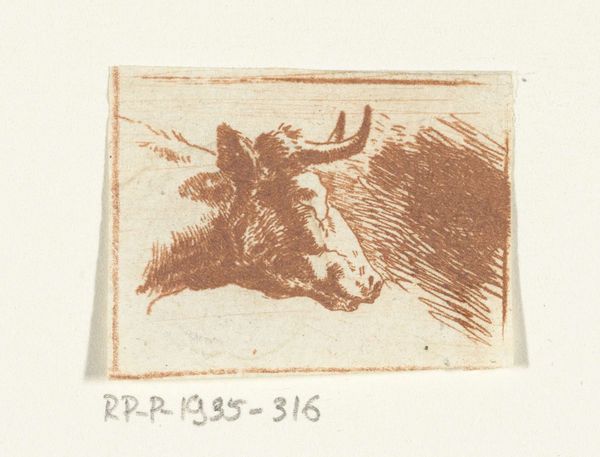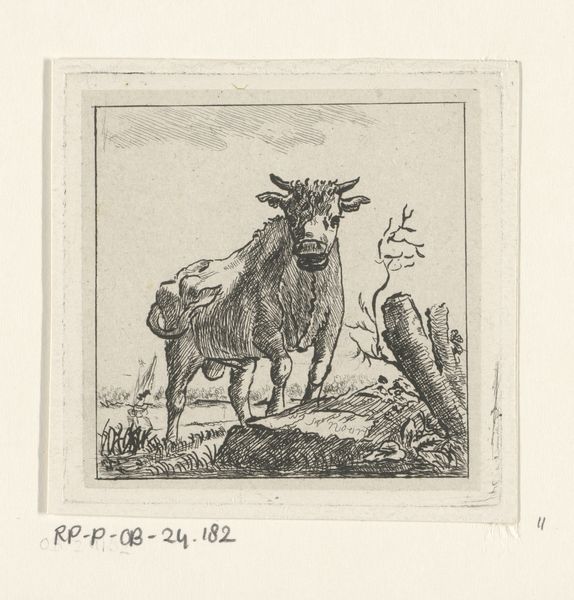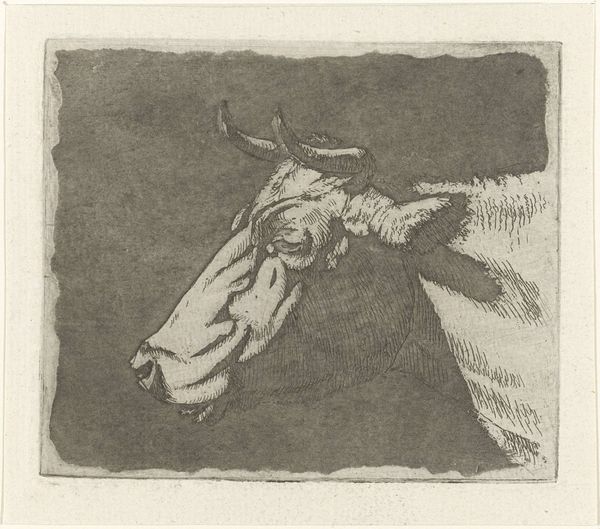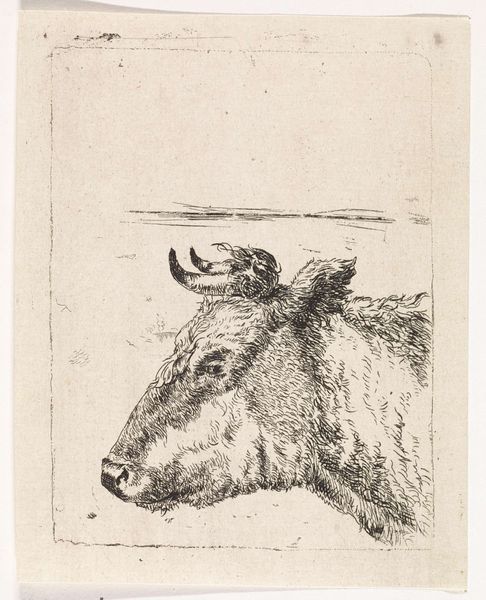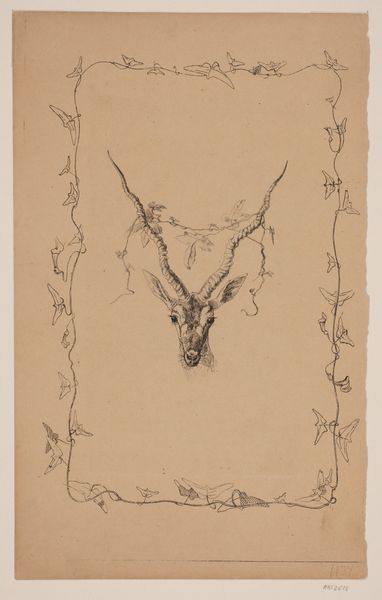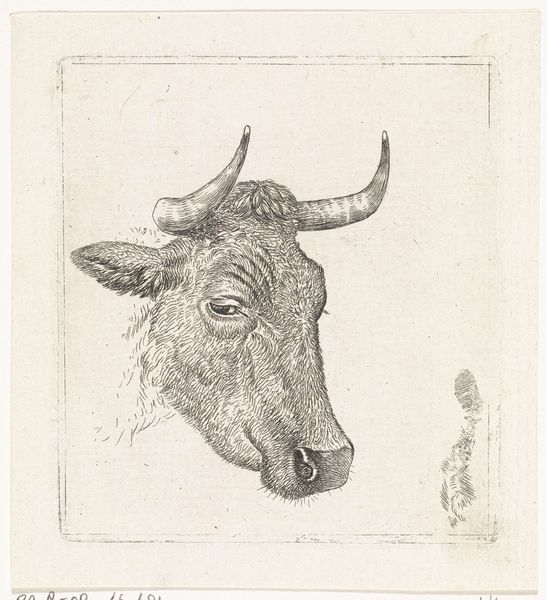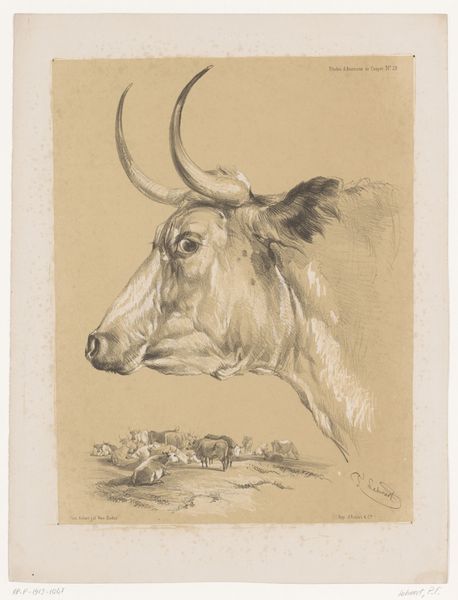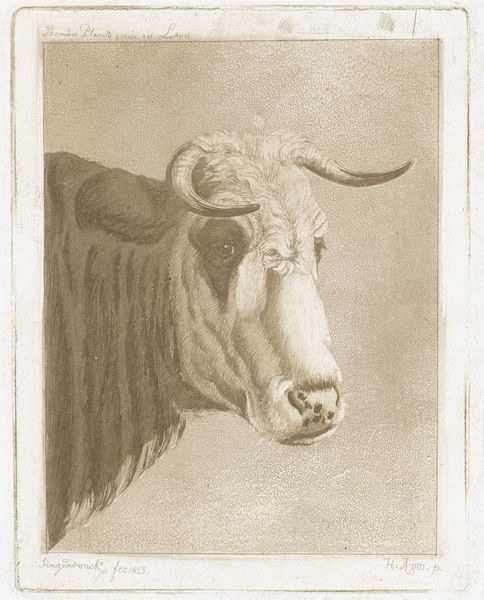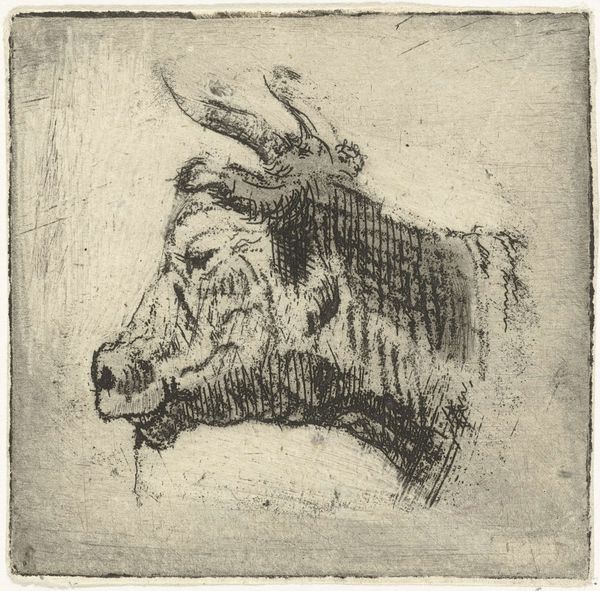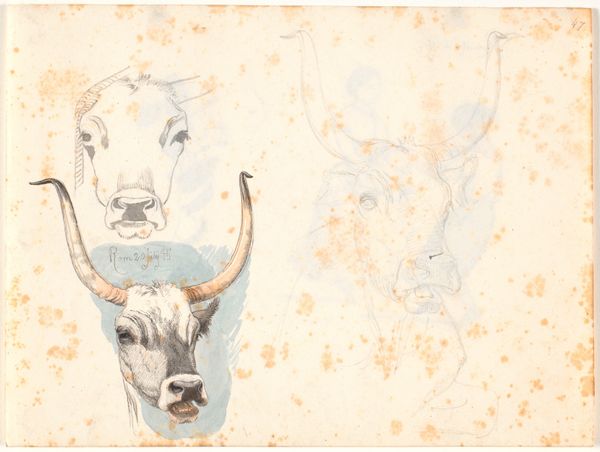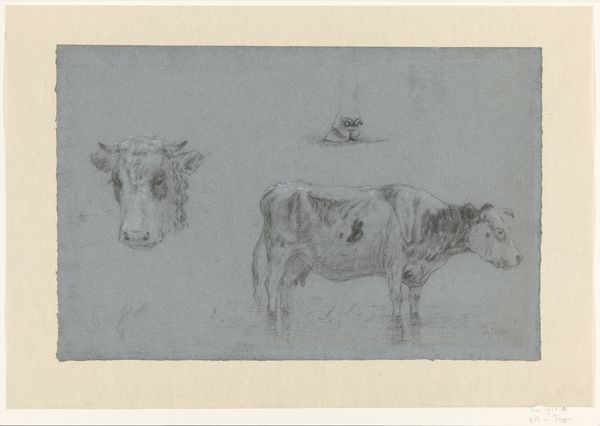
Dimensions: height 42 mm, width 32 mm
Copyright: Rijks Museum: Open Domain
Editor: This is "Koeienkop," or "Cow's Head," an etching by Jan van Noort, created sometime between 1766 and 1837. The sketchy lines give it an unfinished quality. What strikes you most about its composition? Curator: The work's strength lies in its deliberate incompleteness, an intentional disruption of the classical illusionism. Note how the foregrounded cow's head is rendered with relatively greater detail, commanding our focus, while the rest of the plane dissolves into near abstraction. Van Noort presents a visual puzzle, challenging the viewer's expectations of mimetic representation. What sense do you make of this incompleteness? Editor: It feels modern, almost like the artist is emphasizing the *process* of creating an image, not just the final product. The cow feels secondary to the textures of lines. Curator: Precisely. It can be argued that by fragmenting the visual field, Van Noort draws attention to the materiality of the etching process itself. The linear quality emphasizes flatness. Editor: So the content of the etching becomes less important than the technique. The picture of a cow just provides an opportunity for the artist to demonstrate his skills. I didn't expect to be challenged so profoundly by a simple depiction of a cow! Curator: Exactly. The animal is a vehicle to show a new aesthetic terrain that invites speculation and reflection. What may have seemed a mundane depiction is actually charged with radical vision.
Comments
No comments
Be the first to comment and join the conversation on the ultimate creative platform.

